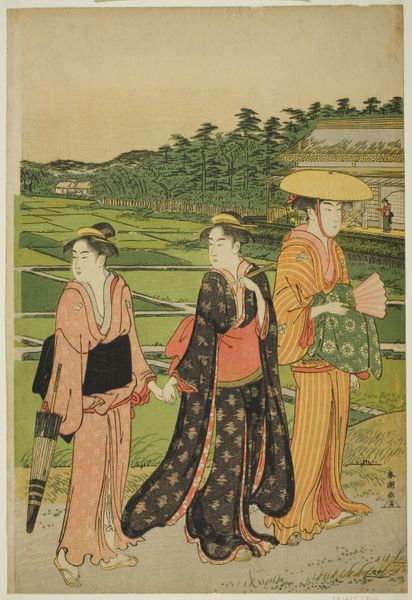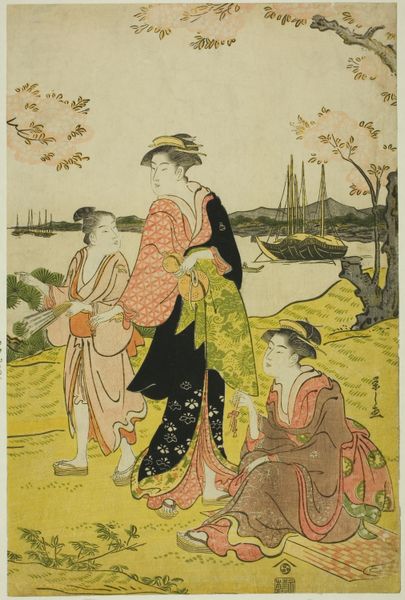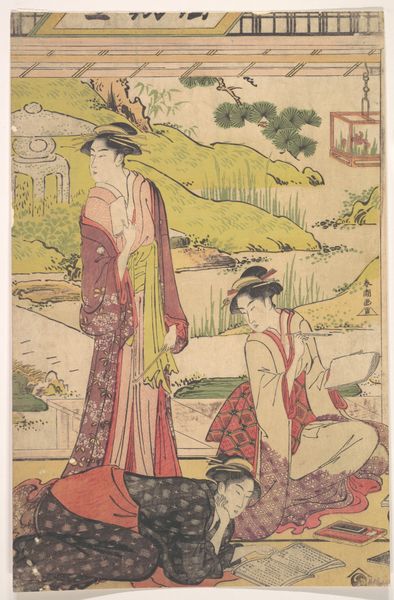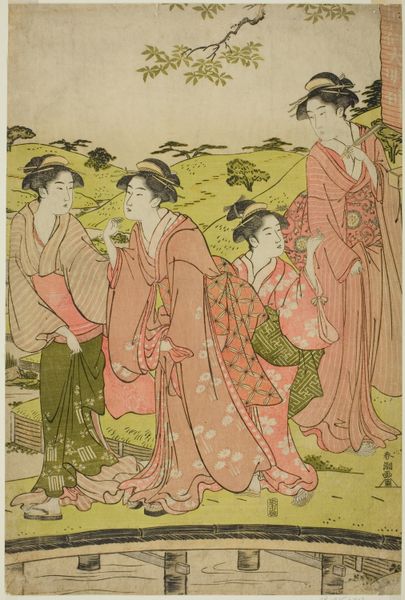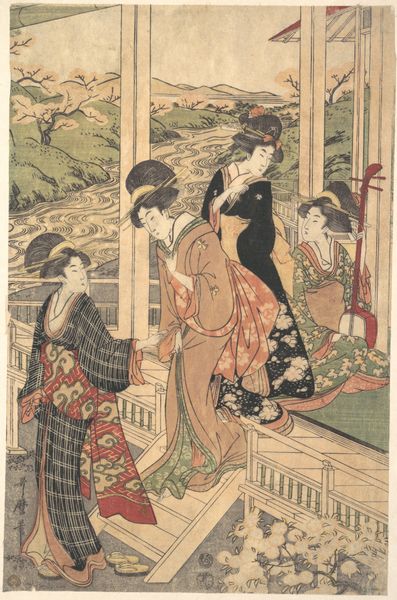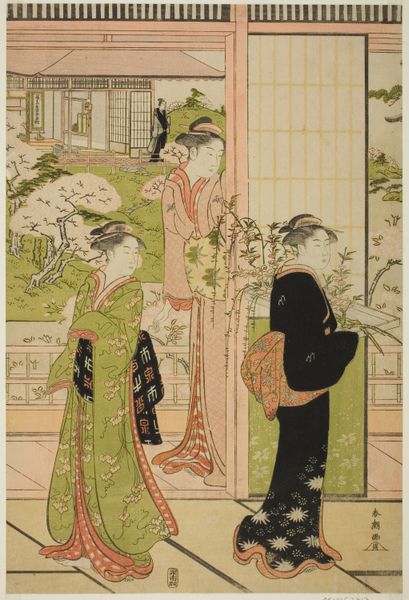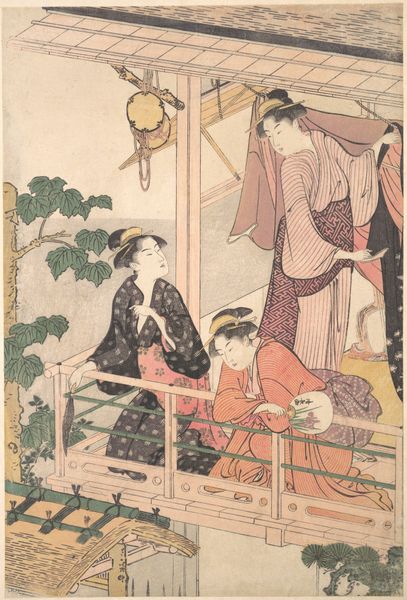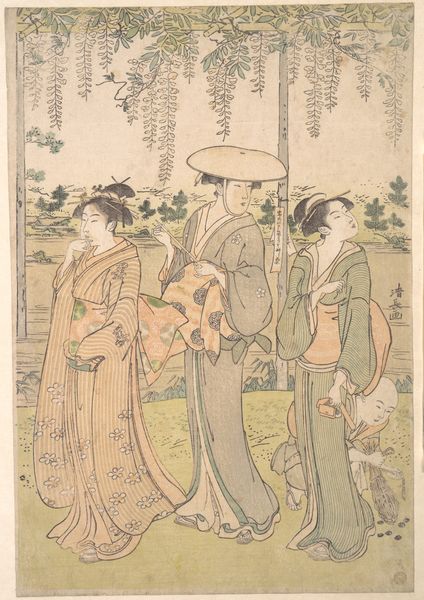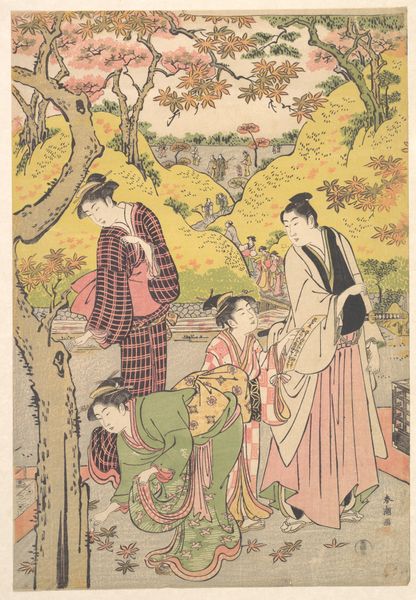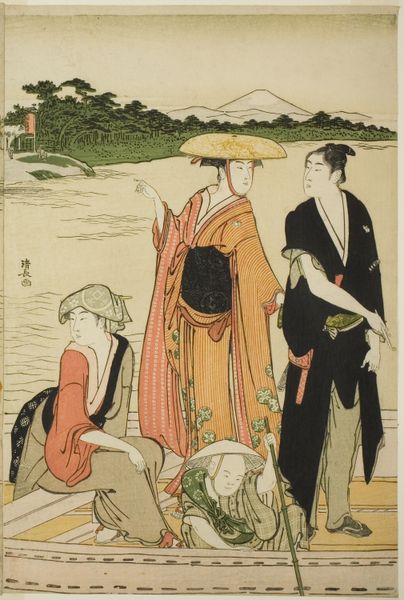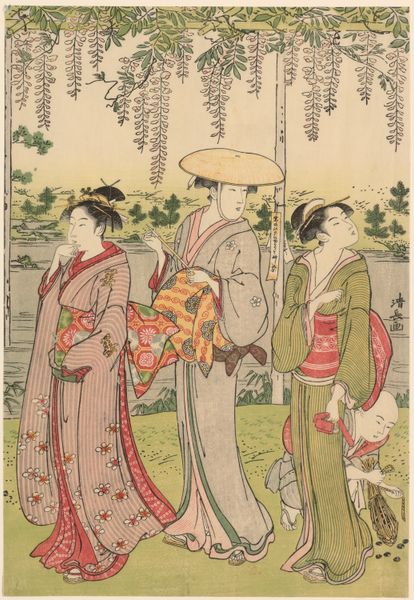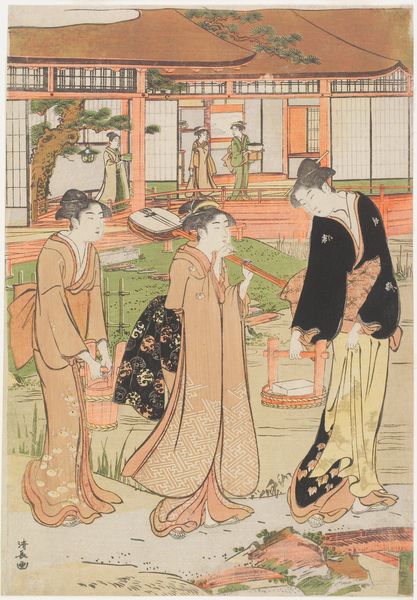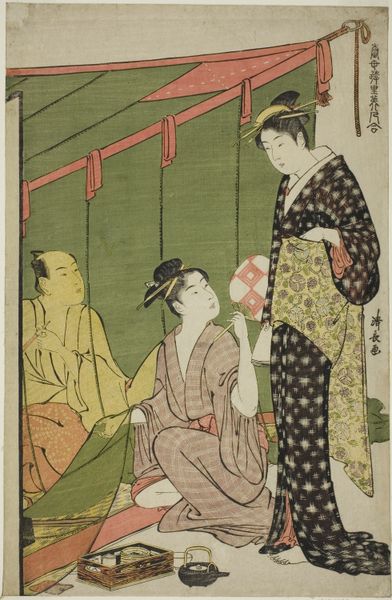
Picking Flowers at Kumano Junisha Shrine in Tsunohazu c. late 1780s
0:00
0:00
print, woodblock-print
# print
#
asian-art
#
landscape
#
ukiyo-e
#
figuration
#
coloured pencil
#
woodblock-print
#
genre-painting
#
watercolor
Dimensions: 37.5 × 25.5 cm (14 3.4 × 10 in.)
Copyright: Public Domain
Curator: Allow me to introduce Katsukawa Shunshō's woodblock print, "Picking Flowers at Kumano Junisha Shrine in Tsunohazu," dating to the late 1780s. Editor: Immediately, I'm struck by its feeling of lightness. The palette is soft, with these gentle washes of colour that give a sense of springtime and fresh air. Curator: It is certainly a serene work, reflecting a particular segment of Edo society at leisure. The woodblock technique itself involved an intense division of labour; each colour requires a separately carved block. One has to admire the printer’s careful registration to apply such a diverse range of inks here. Editor: Absolutely. And observe the visual cues within this image. Notice how the women are placed in proximity to a shrine and stone lanterns; the symbolic language tells us about cultural practices and their relation to this tranquil scene. The flowers themselves, though simply rendered, hint at ideas of transient beauty and the fleeting nature of life. Curator: Considering the social history of these prints, it’s worth remembering that ukiyo-e were a mass-produced art form affordable to a burgeoning merchant class. What appears to be a pastoral scene belies its function as a commodity produced and circulated within the marketplace. The value wasn't necessarily in unique artistry but in the quality and accessibility of production. Editor: Still, that accessibility broadens the potential impact of the symbols embedded within it. The presence of these figures visiting the shrine suggests piety and good fortune—qualities desirable to the aspirational merchant class consuming these images. Curator: Very true. Seeing these women here picking flowers allows us to consider the production involved in the artwork's making, and even their production as upper middle class Japanese women allowed leisure time, at the peak of a stable economic and cultural situation. Editor: Indeed. Reflecting on it, the print encapsulates a sense of ephemeral beauty tied to social and spiritual aspirations within a specific time. Curator: Ultimately, considering the technical labor and cultural context broadens our appreciation for a single print.
Comments
No comments
Be the first to comment and join the conversation on the ultimate creative platform.
